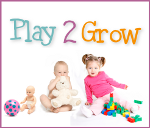
When I first began the masters in early childhood studies program through Walden two years ago, I was overwhelmed. When I looked at the list of courses and thought about the time it would take, I wasn’t sure how I would balance a job, school and other obligations. It was a challenge. There were many nights when I’d come home after a stressful day working with the kids. Schoolwork was the last thing I wanted to do, but I am glad to say that I made it! Part of me is relieved that I am done with the program because I will have time for other things. The other part of me is uncertain because I’m not sure what my next step should be. The mountain in the picture represents overcoming challenges, accomplishing goals and achieving success.
We were asked to share three things that we learned from our course of study.

I have learned so much from the individuals that I have connected with because of this program. I have learned a lot of information through discussion and blog posts from my classmates. Thank you all for sharing information and your experiences as educators. In our Trends in Early Childhood course, we were asked to connect with people who work in the field from other parts of the world. My contacts were Kierna from Northern Ireland and Sherry from Australia. They are both early childhood educators. I learned that many parts of the early childhood systems in other countries are very similar to ours. Early childhood professionals are struggling to be valued and recognized for their work. In most cases, we need to fund our own studies or professional development opportunities. There are also concerns about what is developmentally appropriate. Children around the world do not get to play as much and are forced into learning they aren’t ready for at younger and younger ages. We also have similar concerns with budgeting and paying quality teachers what they deserve. Kierna has a blog called Learning for Life if you would like to check it out. Sherry shares a blog with Donna, another educator called Irresistible Ideas for play based learning. They share many activities that they have done in their classrooms over the years.
Through blogging, I have found likeminded educators throughout the country and around the world. Their posts and ideas have been informative and have influenced the work I have done in my own classrooms. It is amazing how technology has changed and how it allows us to connect with people we would never know otherwise.
I learned what it means to really do research.
In our research competencies course, I designed a research simulation on infant friendships. Before I never understood how to properly read a research article or that there was even a method to do so. I also didn’t understand the concepts involved in designing a research study, but completing the simulation made it clearer. If it weren’t for researchers, we wouldn’t have the necessary information that we use to guide our practices with children. I learned that we are all researchers. We are doing research every day when we ask questions and try to find the answers. When we experiment with a new activity or technique in our classrooms, we are doing research. I want to continue encouraging the children that I work with to become little researchers by experimenting and asking questions.


Finally, I learned that play is essential for child development.
This concept isn’t news to me, but my research especially in this capstone strengthened my belief that early childhood programs should be play based. Play keeps children physically and mentally healthy. Through play children learn about relationships, sharing, empathy and playing different roles. Play helps children process both good and bad events that occur in their lives. Play even helps children learn those important math, science and literacy concepts that are necessary for later success in school. One of my goals is to advocate for play. This capstone course has helped me develop a way to do that. Click here for a list of organizations and links related to play.

To close this entry, I want to thank my classmates for sharing their experiences, offering feedback and being a source of support. There are a few of you who were there when I needed help with some of the assignments. I want to thank Dr. Davis for offering feedback as well. You helped me narrow down my topic which was difficult. You also made me rethink my goals and turn them into something measurable and manageable. I wish you all success and I hope you achieve your goals. If any of you would like to keep in touch, my E-mail address is darceylynn@gmail.com or I can be found on Twitter @play2grow. I hope to cross paths with some of you in the future.













